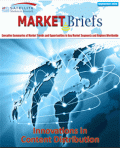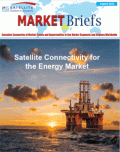A new report from Inmarsat and Globant finds existing satellite technologies could save up to 5.5 billion tonnes of CO2 a year. Satellite technologies are already reducing carbon emissions by 1.5 billion tonnes (or 1.5 gigatons) every year, according to independent research report Can Space Help Save The Planet?, commissioned by Inmarsat from leading consultants at Globant’s Sustainable Business Studio.
Asia-Pacific - Market Trends
According to Market Statsville Group (MSG), the global commercial satellite imaging market size is expected to grow from USD 3.3 Billion in 2021 to US$ 8.5 Bil. by 2030, at a CAGR of 11.1% from 2022 to 2030. Commercial satellite imaging is a technique for displaying high-resolution datasets of ground conditions.
NSR launched today the Version 3.0 of its Non-GEO Constellations Analysis Toolkit (NCAT3), enhancing the industry-leading evaluation toolset of LEO and MEO satellite constellations. NCAT3 expands the set of NSR-surveyed systems to 72 s
Data usage on commercial maritime vessels has jumped more than threefold since 2019, according to new communications analysis by Inmarsat that underlines the shipping industry’s reliance on digital connectivity to enhance operating efficiency and safeguard crew welfare during a period of unprecedented disruption to seaborne trade.
The latest Ground Segment Market report by leading space consulting and market intelligence firm Euroconsult projects the ground station segment to remain quite stable over the 2022 – 2031 period, with a year-on-year growth of 1.4% and a forecasted market value of US$ 3.6 Billion by 2031, driven by the growing demand for data & services.
NSR’s newly released Space Traffic Study, 2nd Edition report finds that commercialization of more segments of the space value-chain is driving a rapid increase in traffic volumes.
The last few years have been turbulent ones for the oil and gas industries. First, tumbling prices, initially due to a 30% decrease in demand as the pandemic effectively grounded airlines and severely curtailed other public transport and private vehicle usage. This was rapidly followed by a price war, as Saudi Arabia stepped up output in a bid to become the dominant supplier. At the same time, the industry, like many others was suffering a shortage of personnel due to the pandemic. A serious issue for an industry that operates heavy machinery in remote locations.





 by Thomas Wrede
by Thomas Wrede

